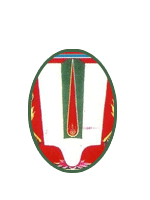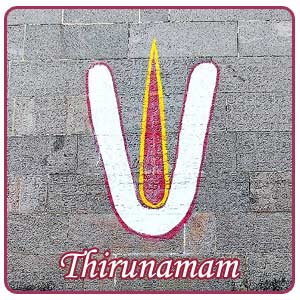 Thiru Stands for Sacredness and Namam Stands For Name
Thiru Stands for Sacredness and Namam Stands For Name
According to Hinduism the word "Thirunamam" in Sanskrit means "Thiru" which stands for sacredness and "namam" stands for name. So it denotes the sacred name of God. The word namam also signifies the white clay found much below the crust of the earth and infact this is used as the powder to wear a flame shaped mark. The people of South India who are more into religious faith were generally referred as Ayyavazhi people and they were the ones who are very much into the putting of the namam. This namam is applied in such a way that it starts from the point in between the eyebrows and goes up straight till the top edge of the forehead and gives the shape of a flame. The flame shaped namam signifies the Atman or Aanma Jyothi which is nothing but represents the sacred name of the God. Ardent devotees belonging to the Ayyavazhi group smear this on different parts of the body like the exterior of the upper arms, over the chest and below the spinal cord area at the back. Smearing of this namam in different places gives different meaning.
 Thirunamam is worn differently by various class people
Thirunamam is worn differently by various class people
-However the thirunamam is quite different from that worn by the Hindus of Vaishnavism tradition who apply it on the forehead in the shape of 'U', or of Saivism tradition who apply it horizontally as three parallel lines.
The social setup in the nineteenth century specially gave way for the Thirunamam. The Travancore society was known for its discriminative ranking of the caste system. This discriminative hierarchy led to untouchability, unseeability and unapproachability of a certain class of people. This soon got stabilized as a religious institution and was started to be followed even in temples where the priests offered prasadam to the higher class freely for even touch would not be minded by them whereas offering of prasadam to the lower caste people was considered as untouchability thinking that it would pollute them and hence they threw it on the platform.
 The Ritual of 'Tottu Namam' Came into Existence
The Ritual of 'Tottu Namam' Came into Existence

It recast the priest-devotee relationship to bear upon the social reality of the time. This paved way for the reverse of hierarchical social relationship and discrimination based on purity and pollution. Thus the practice of 'Tottu Namam' soon helped in wading of the inequalities present at that period in the Tamil society in India.
 Importance of Thirunamam Holds Good For All Periods of Life
Importance of Thirunamam Holds Good For All Periods of Life
-Not only ancient period but the importance of thirunamam holds good for all periods of life and at the same time it is religiously inspired with a religious belief that the flame shaped atman is nothing but the sacred name of God or the supreme self. There were beliefs of those who are great devotees of Vaikundar will be turned to the name of God or Atman which is the purified jeeva.The thirunamam starts from the Ajna Chakra or central point in between the eyebrows which is associated with the Kali Yuga of the 'Eight yuga circle' as per Ayyavazhi scriptures and now we being in the Kali Yuga, the application of thirunamam helps in purifying our jeevas and thereby attain the sacred feet of God. One of the primary scriptures of the Hindus, Akilam also states that the practice of applying thirunamam on the forehead is to be a primary ritual considered very ceremonial and sacred. There are other mentions about the thirunamam in Arul Nool which states that Ayya personally touched the devotees and wore Thirunamam for them.


